ABIT’s AA8-DuraMAX — The Next Winner or Loser?
Professional Testing:
MAXON; CINEBENCH 2003:
CINEBENCH 2003 is the free benchmarking tool for Windows and Mac OS based on the powerful 3D software CINEMA 4D R8. The tool is set to deliver accurate benchmarks by testing not only a computer’s raw processing speed but also all other areas that affect system performance such as OpenGL, multithreading, multiprocessors and Intel’s new HT Technology. Again, higher Frames/Second and lower rendering time in seconds equal better performance.
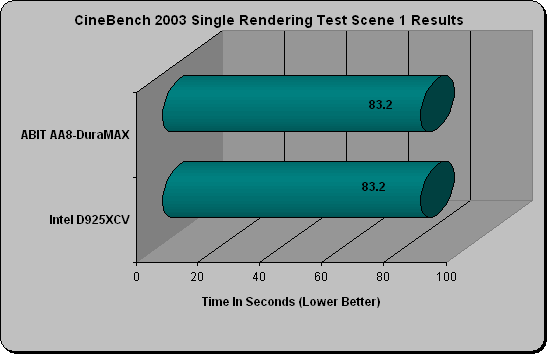
Case Lab CFD Solver:
The benchmark testcase is the AGARD 445.6 aeroelastic test wing. The wing uses a NACA 65A004 airfoil section and has a panel aspect ratio of 1.65, taper ratio of 0.66, and a quarter-chord sweep angle of 45. This AGARD wing was tested at the NASA Langley Research Center in the 16-foot Transonic Dynamics Tunnel and is a standard aeroelastic test case used for validation of unsteady, compressible CFD codes. The CFD grid used to model this problem consists of 67,435 nodes and 366,407 tetrahedral elements.
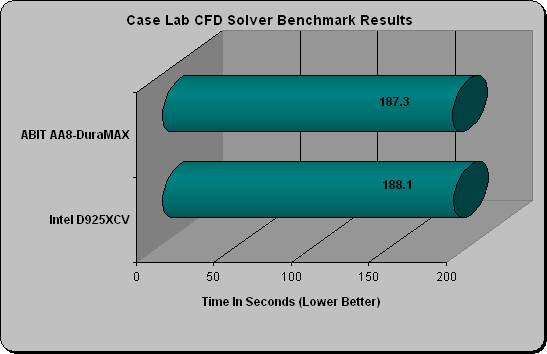
POV-Ray 3.6.0:
The POVRay benchmark is great for showing the performance levels of various processors and compilers by timing how long it takes for POV-Ray to render a standard image with standard parameters.
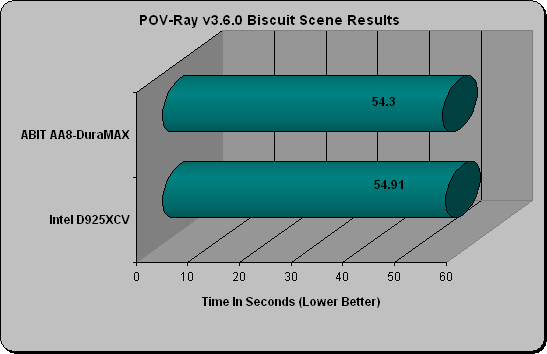
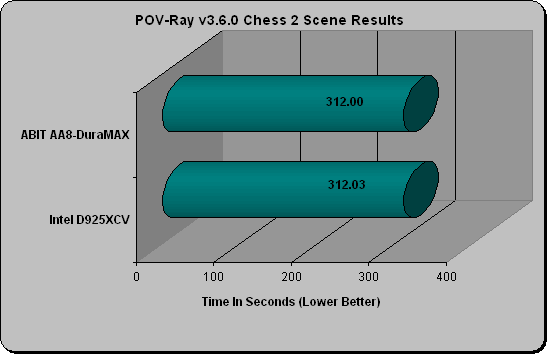
ScienceMark 2.0 Beta:
Science Mark 2.0 is an attempt to put the truth behind benchmarking. In an attempt to model real world demands and performance, ScienceMark 2.0 is a suite of high-performance benchmarks that realistically stress system performance without architectural bias. For the Memory Testing, higher numbers represent better performance. On the remaining tests, lower seconds represent better performance.
Primordia “calculates the Quantum Mechanical Hartree-Fock Orbitals for each electron in any element of the periodic table.” We ran the benchmark on default using Argon as our element.
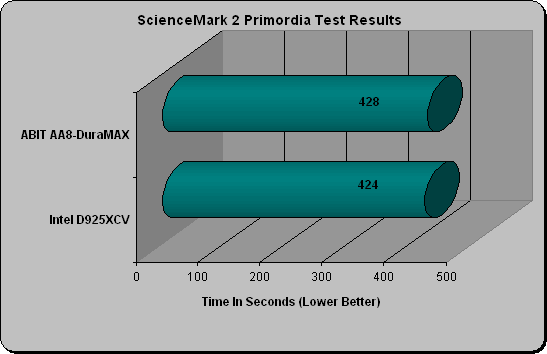
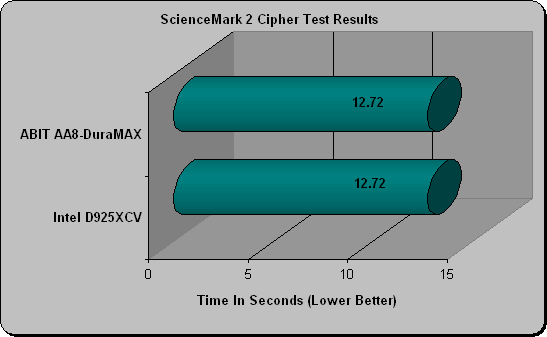
Results: As you can tell there is not too much difference between the ABIT AA8-DuraMAX and the Intel D925XCV reference boards here. Guess that little bit of extra bandwidth we noticed on the memory didn’t turn over to any real world performance gain.

Comments are closed.